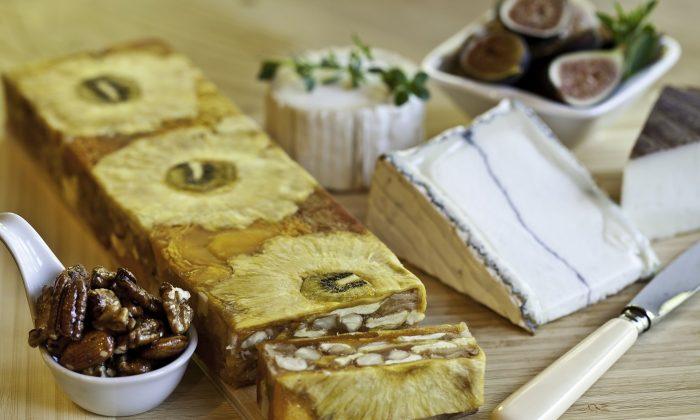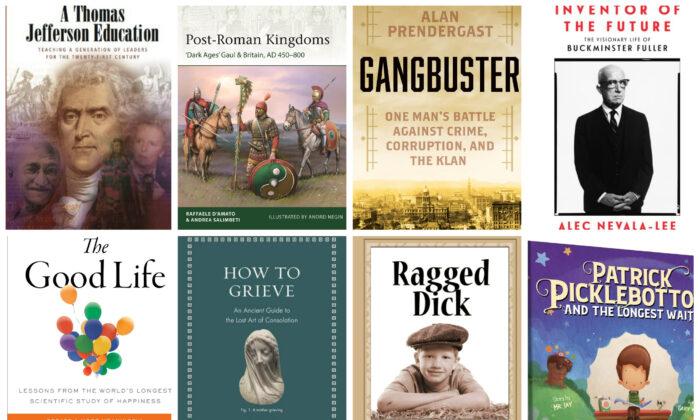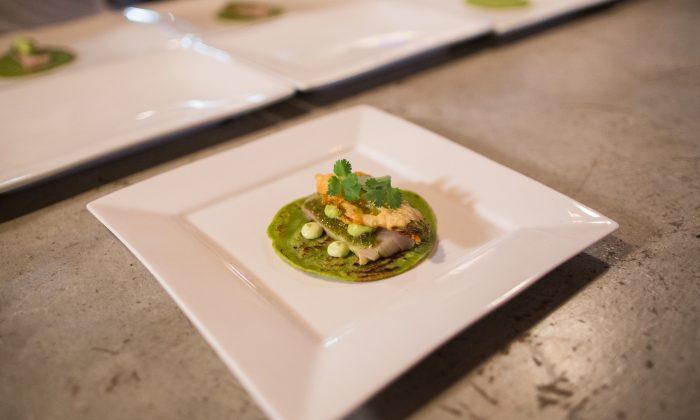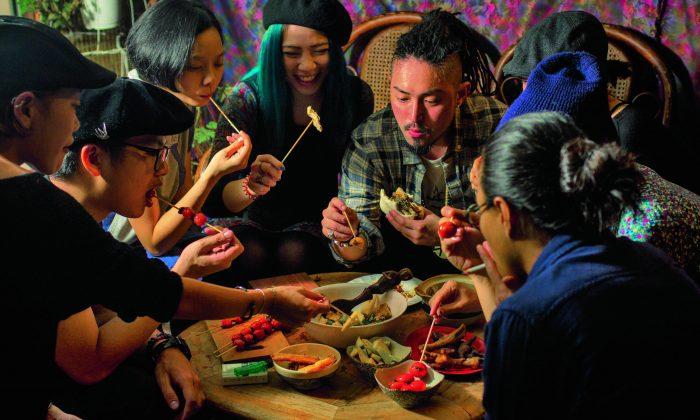Getting to sample and judge more than 2,500 specialty products, including artisanal chocolates, cheeses, and drinks sounds like the opportunity of a lifetime to foodies.
In advance of the Specialty Food Association Summer Fancy Food show, 26 judges spent eight full days tasting and narrowing down the specialty products to about 125 finalists across 32 categories for the sofi Awards, one of the most coveted awards in the specialty food industry.
While some activities in the twitter-sphere pointed to job envy, there was also some sympathetic commiseration. “I taste things all the time for work, I do not envy your tastebuds. Have fun!” wrote @goodeatsmeets.
Indeed judge Francine Segan said that while trying to get through the various categories of sweets, another judging team asked why her team had turned so green. “Eating cookies is hard work!” she explained.
FreshDirect merchant Ken Blanchette tweeted, “Finished 70 oil tasting or did it finish me?”
The judging teams consisted of chefs, writers, historians, food scientists, and buyers, which means that the products got a comprehensive assessment, with each judge bringing a different perspective. For example, a package that a writer might find endearing could be a disaster in the eyes of a retailer who finds that it takes up too much space on the shelf.
The products were assessed for: taste, quality, innovation, ingredient profile, merchandisability, and best in its class.
The sofi Award winners will be decided at the Summer Fancy Food Show by attending retailers and food service buyers, and will be announced June 30 at a ceremony hosted by Cronut creator, Dominique Ansel.
The Merchant
Ken Blanchette is the specialty merchant at FreshDirect, and oversees all imports. Growing up in Brooklyn, he spent weekends with his grandparents preparing Sunday dinners for a dozen family members, which entailed making pasta from scratch and shopping with his grandmother for live chicken at the market.
He has also worked as researcher in the field of biochemistry and owned an award-winning charcuterie business.
On Coping With the Pace of Tastings:
I’m always the last to finish; I run at a slow pace and want to make sure I don’t miss anything.
On the Most Challenging Aspect:
Making sure that I don’t overwhelm my palate with highly seasoned products before the end of a session.
On Trends:
If it had bourbon, pink salt, hot peppers, rosemary, bacon, caramelized anything, coconut, kale, or balsamic it was at the sofi Awards.
Three Standout Products:
Great kamut pasta that is just great pasta from Riccardo Felicetti president of the Italian National Association of Pasta Makers.
Unbelievably delicious and innovative raviolis from Nella in Massachusetts, thoughtful, flavorful, and with an understanding of food history.
Great ricotta from Jersey cows, never acidulated, sweet like cannoli filling from Bellwether in California.
I must say there were many great products presented at the sofi Awards competition and it was tough in the end to distill the selection to the ultimate finalists.
On Unusual Products:
Two olive oils both from California, one that tasted of stone fruits, another started with sweet floral notes and ended with Rutherford dust.
Tips for Making the Most of the Fancy Food Show:
I have advantages and disadvantages versus most visitors; I make appointments for people I want to see but I’m known by many exhibitors who want to show me their products.
For me and any attendee:
Make a game plan, what do you want or need.
Make a list of exhibitors you want to visit, make appointments.
Scope out the show on the first day, walk the aisles to see if you’ve missed something on your list or are awed but something new.
Do not eat your way through the show; sample only products necessary to make a decision.
Wear comfortable walking shoes, forget fashion.
Stay sober, get enough rest, repeat.
* * *
The Historian
Francine Segan is a food historian, author, and public speaker. She is an expert in Italian food, wine, and travel. Her most recent book is “Pasta Modern: New and Inspired Recipes From Italy.”
On Labels and Surprise Ingredients:
Not all of us [judges] approach labels the same way. Some people look at, “Oh do I understand what it is, basically.” Some of the other specialist judges would analyze ingredients more closely. It was so enlightening.
A salad dressing, a product you wouldn’t expect a meat product in, had meat broth.
The huge amount of sugar or fat … A product could have misleading things in the front of it, “healthy, great snack.” Then we would taste it: terrific. But those who really studied the ingredients said, ‘Look at the percentages. In this healthy dried fruit snack there’s more sugar than in a candy bar. Or in this supposed cracker there’s more sugar than in candy.’”
So sugar was a big surprise. So much salt and fat.
But I did see a huge rise in clarity of non-GMO, gluten-free, vegan, so some people are really doing some beautiful packaging.
On Bonding With Fellow Judges:
We became, I think, like veterans after a war. We shared this incredible challenge of tasting 164 cheeses in three hours, 121 chocolates in two hours 420 things in one day; and learning to respect each other and express your differences respectfully and also learn from each other.
We all wanted the same thing—we wanted to pick the best, what people would be excited about.
Three Standout Products:
From Italy:
Smoked figs from Calabria, enclosed in a fig leaf, hard to find even within Italy.
Monograin Felicetti pasta [in kamut, farro].
Amazing tiny little unripened peaches, marinated in truffle oil so it’s a cocktail nibble. It looks like an olive but when you taste it you’re immediately like what am I eating?”
From America:
Blue Hill yogurt. Instead of vanilla or fruit: vegetables—beets, sweet potatoes, butternut squash. It was sweet, but savory sweet. You could eat this plain, or dip vegetables for lunch or marinate chicken breast in this.
Sir Kensington ketchup. I said to them, “Where are you getting the tomato concentrate? I’ve never had such good ketchup.” The tomatoes are from California. It’s got a third of the sugar of other ketchups.
Grace and I’s pressed fruits and nuts, with nothing else added—but pressed so it looks like a piece of cake.
Most Difficult Category to Get Through:
Cookies. We were all so excited—we’re going to do cookies, chocolate!
We'd come back after the 2 1/2 hour session [with] a plunge of energy, [then] get cranky, and we found that we were all snippier during the debate. We realized, we’re like kids during Halloween, we’re being naughty. Sweets were the toughest.
On Cheese:
The biggest category was cheese. Surprisingly we did not fatigue in that one, even though cheese fills you up—that’s why it’s served at the end of your meal. It closes your appetite, fat coats your palate—because it was a real food.
On Looking at Products From a Historian’s Perspective:
It’s nice to see what’s old is new again, to see trends that were popular during the Renaissance ... coming back: floral flavors, rosewater, orange blossom water.
Another thing that was popular in the Renaissance, for the nobility, they would be given white bread. … Poor people had whole grain bread that luckily had ... protein and [was a] source of good fiber. … Those ancient grains, whole grains are big trends.
Another trend, which you saw in ancient times: seeds in food, as a flavoring, as a pretty look.





